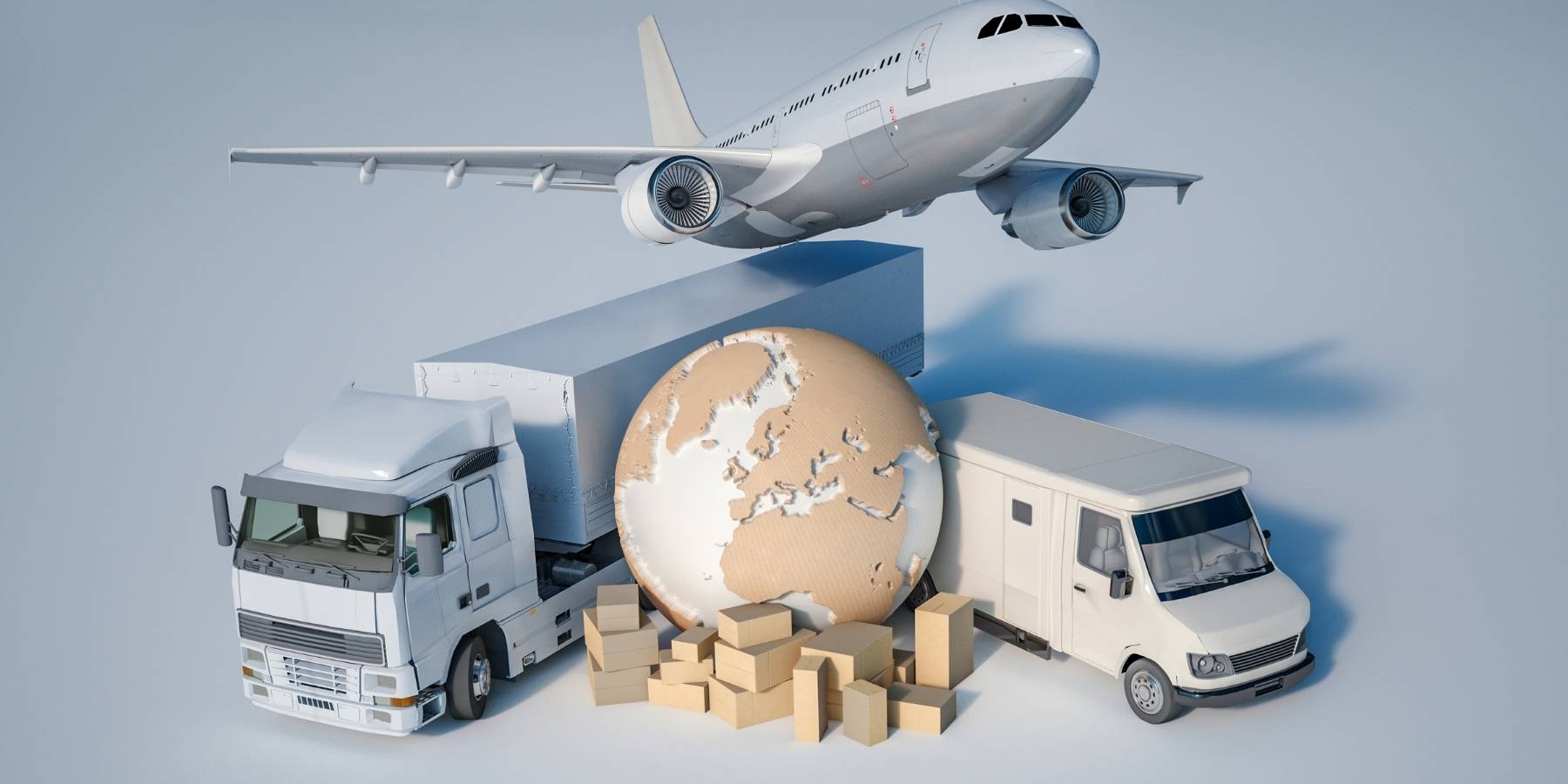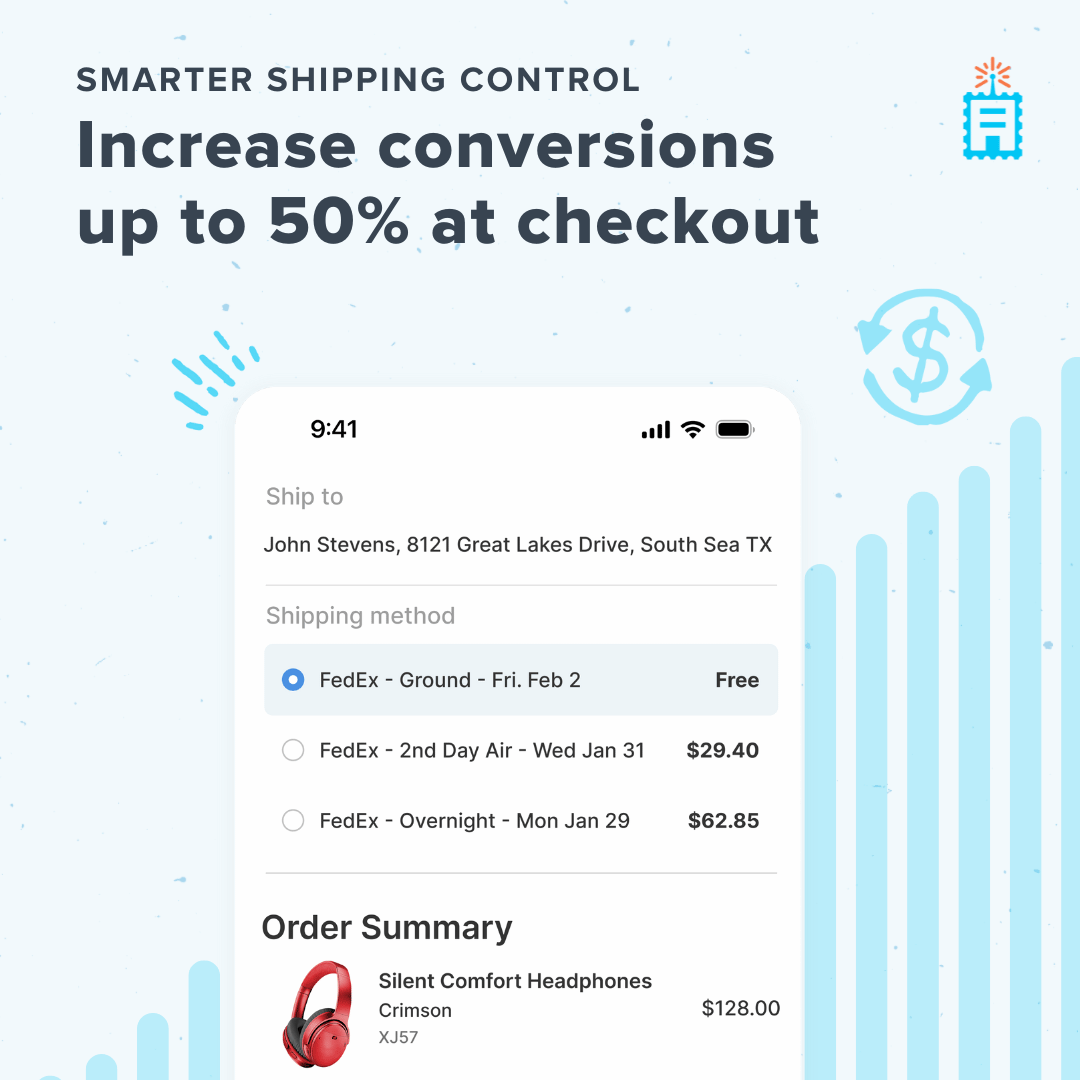When it comes to online shopping, few things matter more to your customers than how fast their order arrives.
Whether it’s a last-minute birthday gift or a routine household item, delivery speed can be the deciding factor between a completed sale and an abandoned cart. As a shopper, the decision is emotional. As a merchant? It’s strategic. And believe us, getting it right matters.
As an eCommerce merchant, the difference between expedited and standard shipping isn’t just about speed – it’s about customer expectations, conversion rates, and your bottom line.
Let’s break down what each option really means for your online business.
TLDR –
Expedited vs standard shipping comes down to delivery speed and customer urgency. Expedited shipping delivers orders in 1-3 business days and is ideal for last-minute, high-value, or seasonal purchases. Standard shipping typically takes 3-7 business days to deliver and works well for non-urgent, cost-conscious deliveries.
Today’s shoppers expect both speed and clarity. Offering a mix of shipping options, paired with clear estimated delivery dates at checkout, can help boost conversions, lower cart abandonment, and elevate the overall shopping experience.
What Is Standard Shipping?
Think of standard shipping as the “default” option for most eCommerce checkouts. It’s affordable, widely available, and predictable, usually delivering in 3 to 7 business days.
It’s perfect when:
- The order isn’t time-sensitive
- The shopper values cost over speed
- You want to offer free or flat-rate shipping
Common Carriers and Services
- UPS Ground
Ideal for domestic ground shipping across the continental U.S. Packages can be up to 150 lbs. - FedEx Ground
A cost-efficient shipping option for small and medium businesses. The ideal package weight is 1–10 lbs. - USPS First-Class Mail
An affordable and convenient way to send envelopes, postcards, and small packages (up to 13 ounces).
Pros for merchants:
- Cost-effective
- Simpler to manage
- Ideal for lightweight or lower-value items
Cons:
- Longer delivery times
- Doesn’t always meet customer urgency
What Is Expedited Shipping?
Expedited shipping is all about speed – getting items delivered in 1 to 3 business days. It’s designed for time-sensitive purchases and customers who value speed over cost.
Used frequently for:
- Last-minute purchases
- Perishable goods or high-ticket items
- Busy seasons like BFCM or holidays
Common Carriers and Services
- UPS 2nd Day Air
Guarantees delivery within two business days. Packages can be up to 150 lbs. and up to 108” long. - DHL Express
A preferred carrier for fast international deliveries. - FedEx 2 Day Shipping
Packages are delivered within 2 business days throughout the United States. - USPS Priority Mail Express
Offers overnight to 2-day guaranteed delivery. Price includes proof of delivery signature record.
Pros for merchants:
- Boosts conversion when urgency matters
- Aligns with modern “Prime-like” expectations
- Reduces cart abandonment from delivery hesitation
Cons:
- Higher shipping costs
- Requires tighter operations and planning
Expedited vs Standard Shipping: Key Differences at a Glance
Here’s a side-by-side breakdown of how these shipping options compare across key criteria:
| Feature | Standard Shipping | Expedited Shipping |
| Delivery Speed | 3-7 business days | 1-3 business days |
| Cost to Merchant | Lower | Higher |
| Customer Cost | Often free or low | Typically higher |
| Best For | Non-urgent items | Urgent or time-sensitive orders |
| Customer Expectations | “I can wait” | “I need it now” |
| Impact on Returns | Neutral or Low | May reduce returns if promises are kept |
| Seasonal Suitability | Year-round | Ideal for peak seasons and gifting occasions |
Cost vs Conversion: What the Data Says
Offering faster shipping can significantly influence purchase behavior, but it’s not without additional cost.
Faster Shipping Improves Conversion Rates
23% of U.S. online shoppers abandon their cart because the delivery is too slow. When you offer expedited shipping, even if customers don’t choose it, they’re more likely to complete their purchase just knowing the option is available.
Consumers Are Willing to Pay for Speed
41% of consumers are willing to pay extra for same-day delivery. This is especially true for Gen Z shoppers and during high-pressure times like the holidays.
Managing Margins
While expedited shipping is more expensive, it doesn’t have to eat into your profits. Consider the following:
- Charge an additional fee for faster delivery
- Offer it only for high-margin or high-ticket items
- Limit availability to certain ZIP codes or products
Customer Expectations: The Amazon Effect
Amazon didn’t just raise the bar – they set a new one entirely. “Two-day shipping” became a promise. Now, customers don’t just want fast shipping, they expect it.
Even worse? If you don’t show clear estimated delivery dates at checkout, they’ll abandon and buy from someone who tells them exactly when it’s arriving.
What modern customers want:
- Clear timelines, not vague windows
- Delivery options that suit their lives
- Trustworthy fulfillment, not broken promises
You don’t have to offer same-day delivery. But you do need to communicate expectations clearly.
When to Offer Each Shipping Option
The choice between expedited and standard shipping depends on your products, audience, and goals. Here’s how to decide what makes sense for your brand.
Offer Standard Shipping When:
- You sell non-urgent items- Think books, home accessories, or casual apparel.
- You’re targeting cost-sensitive shoppers- Many buyers prioritize free or low-cost shipping over speed.
- You’re optimizing for simplicity- Standard shipping is easier to manage and scale.
Offer Expedited Shipping When:
- You sell time-sensitive or perishable products- Items like food, flowers, or last-minute gifts need speed.
- You serve premium customers- Those shopping for high-end products often expect quick and secure delivery.
- You’re in a peak season- During Black Friday, Cyber Monday, and holiday periods, speed becomes essential.
Better yet? Go hybrid.
- Set standard shipping as the default
- Let customers upgrade to expedited at checkout
Use shipping management tools like ShipperHQ to dynamically adjust shipping options based on real-time data (location, weight, delivery window)
Finding the Right Fit for Your Brand
There’s no silver bullet here. The “right” shipping strategy depends on your customers, your products, and your margins.
But one thing’s crystal clear: how you present your shipping options at checkout is just as important as what you offer. When customers feel confident in delivery, they convert. When they see flexibility and transparency, they come back.
So don’t just plug in carrier rates and hope for the best. Use shipping management tools that give you control over speed, cost, and customer experience.
A Few Tips to Keep in Mind:
- Test your options- Try offering expedited shipping during high-volume times and monitor conversions.
- Ask your customers- Use surveys or post-purchase feedback to understand what delivery speeds they expect.
- Communicate clearly- Shipping options are only valuable if customers understand what they’re getting and when.
Want to convert more checkouts, keep customers happy, and stay profitable? Then your shipping experience needs to be as intentional as your product page or email strategy.
ShipperHQ helps thousands of eCommerce brands optimize their shipping and checkout experience to drive conversions and delight customers.







